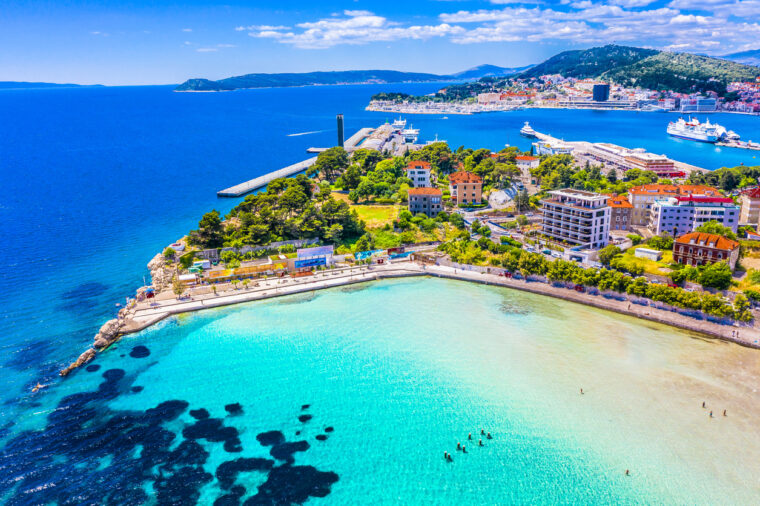Croatia’s Dalmatian coast is home to some of the most breathtaking islands in the Mediterranean, with crystal-clear waters, historic towns, and natural wonders that captivate travelers from around the world. Split, the vibrant coastal city with its ancient Diocletian’s Palace, serves as the perfect gateway to these island treasures. Whether you’re seeking vibrant nightlife, secluded beaches, or authentic cultural experiences, the islands near Split offer something for every type of traveler.
We will take you through the 9 best islands to visit near Split, complete with practical information on ferry schedules, costs, accommodation options, and insider tips to help you plan the perfect Croatian island-hopping adventure.
KEY TAKEAWAYS
- Split is the perfect base for exploring Croatia’s islands, offering easy ferry access to over 1,000 Adriatic gems.
- Each island offers a unique experience—from Hvar’s nightlife and Korčula’s medieval streets to Mljet’s serene lakes.
- The best time to visit is late spring or early fall for great weather, fewer crowds, and better ferry availability.
Why Island Hop from Split?
The Adriatic Sea surrounding Split is one of those rare bodies of water that lives up to every traveler’s dream: impossibly clear turquoise waters where you can see up to twenty feet below in certain coves, perfect salinity for effortless floating, and summer temperatures ranging from a pleasant 72°F to 86°F (22-30°C). With over 1,000 islands dotting Croatia’s coastline, spending time exploring these gems is an essential part of any Croatian experience.
Split’s strategic location makes it the ideal base for island exploration. The city’s main ferry port offers regular connections to numerous islands, with options ranging from quick 25-minute hops to longer journeys that take you further into the Adriatic. Modern catamarans, traditional ferries, and private boat tours depart daily, especially during the peak summer season (June-September).
Explore Split yacht charter guide.
Planning Your Island-Hopping Adventure
Before diving into our island recommendations, here are some practical considerations to help you plan your trip:
How Much Time Do You Need?
- 3-4 islands: Allow at least a week to experience each destination without rushing
- 6+ islands: Consider a two-week itinerary for a more comprehensive exploration
- Day trips: Many islands can be visited in a single day from Split, but staying overnight offers a more authentic experience
Transportation Options
- Public Ferries: The most economical option, with tickets ranging from €7-€200 depending on distance and vessel type
- High-speed catamarans (passengers only): Faster but more expensive
- Car ferries: Slower but allow vehicle transport
- Tip: Book in advance during peak season (June-September)
- Private Boat Tours: Organized day trips visiting multiple islands
- Perfect for those with limited time
- Often include stops at popular attractions like the Blue Cave
- Yacht Charter: For the ultimate flexibility and luxury experience
- Options range from skippered sailboats to luxury motor yachts
- Allows access to secluded coves and beaches unreachable by ferry
- See yacht charter Split options.
Best Time to Visit
- April-June and September-October: Ideal months with pleasant weather and fewer crowds
- July-August: Peak season with hottest temperatures, most ferry connections, but also largest crowds and highest prices
- November-March: Many ferry services operate on reduced schedules, and some island businesses close for the season
Now, let’s explore the 9 best islands near Split, each with its own unique character and attractions.
1. Hvar Island: The Glamorous Gem
Distance from Split: 33 miles (53 km)
Ferry duration: 55 minutes (catamaran), 1 hour 40 minutes (car ferry)
Weekly connections: 64 sailings in peak season
Hvar has earned its reputation as Croatia’s premier island destination, attracting celebrities, yacht owners, and travelers seeking a perfect blend of natural beauty, history, and vibrant nightlife.
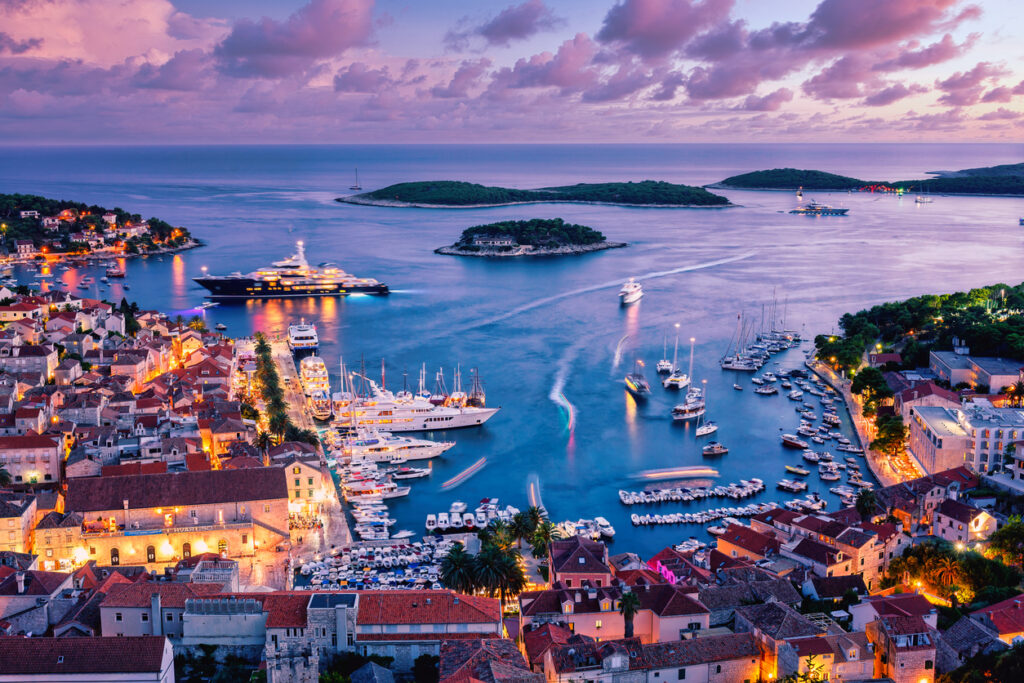
What Makes Hvar Special
Hvar Town, a UNESCO World Heritage Site, is the island’s crown jewel—a picturesque harbor town with medieval architecture, marble streets, and a stunning 16th-century fortress overlooking the Adriatic. The town’s main square, dominated by St. Stephen’s Cathedral and surrounded by elegant Venetian buildings, creates one of the most beautiful urban spaces in Dalmatia.
Beyond Hvar Town, the island offers remarkable diversity:
- Stari Grad: One of Europe’s oldest towns (founded 384 BC), offering a more authentic and relaxed atmosphere than Hvar Town
- Jelsa and Vrboska: Charming fishing villages with fewer tourists and more local character
- Lavender fields: The island’s interior is famous for its fragrant lavender, particularly around the village of Brusje
- Pakleni Islands: An archipelago of 16 wooded islets just off Hvar’s southwest coast, accessible by taxi boat from Hvar Town
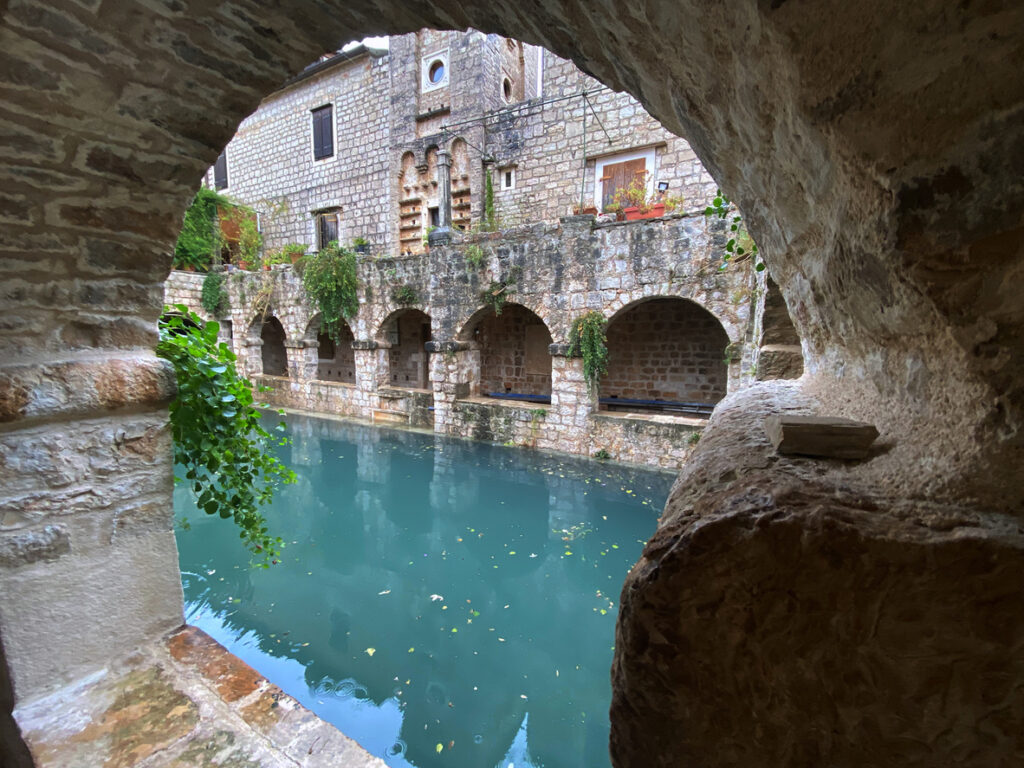
Beaches and Natural Attractions
- Dubovica Beach: A picture-perfect pebble beach with crystal-clear water, located in a small bay about 8 km east of Hvar Town
- Pokonji Dol: Easily accessible from Hvar Town, this beach offers stunning views and excellent swimming
- Mekićevica: A secluded beach reachable only by boat or a 30-minute hike, perfect for escaping crowds
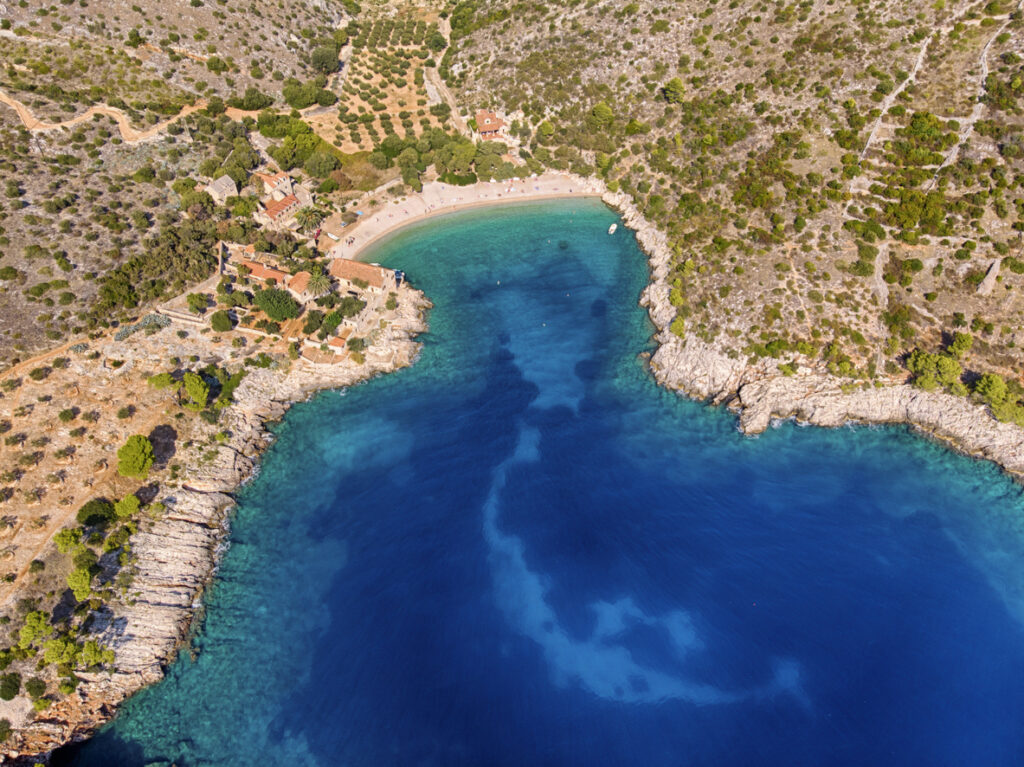
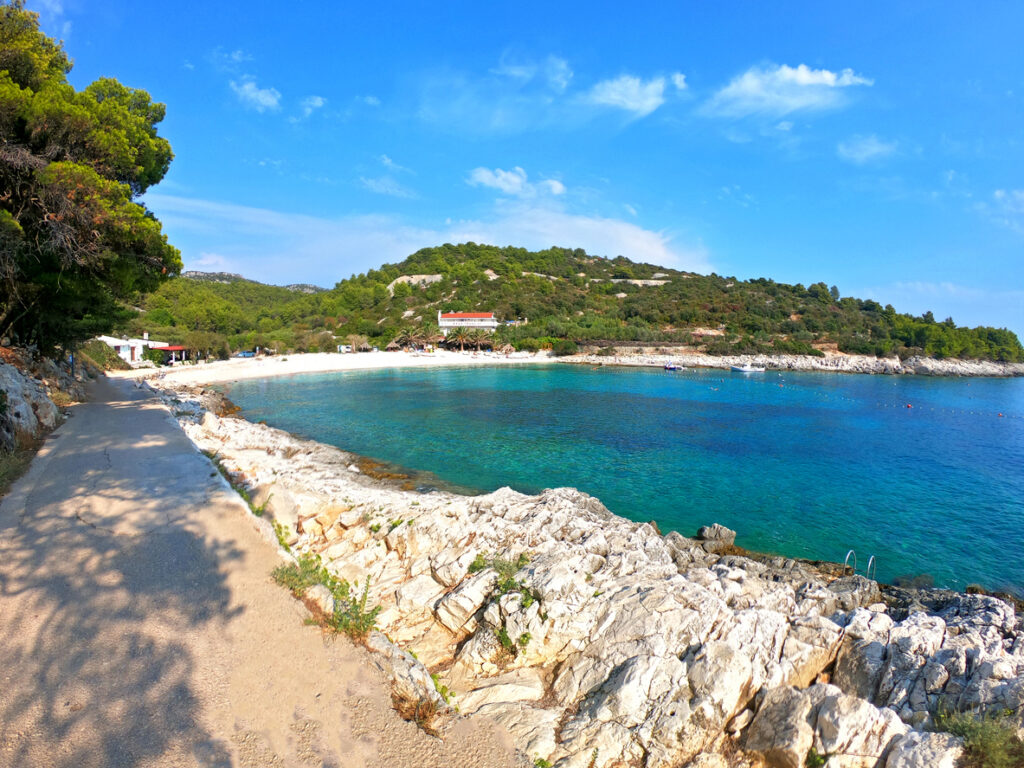
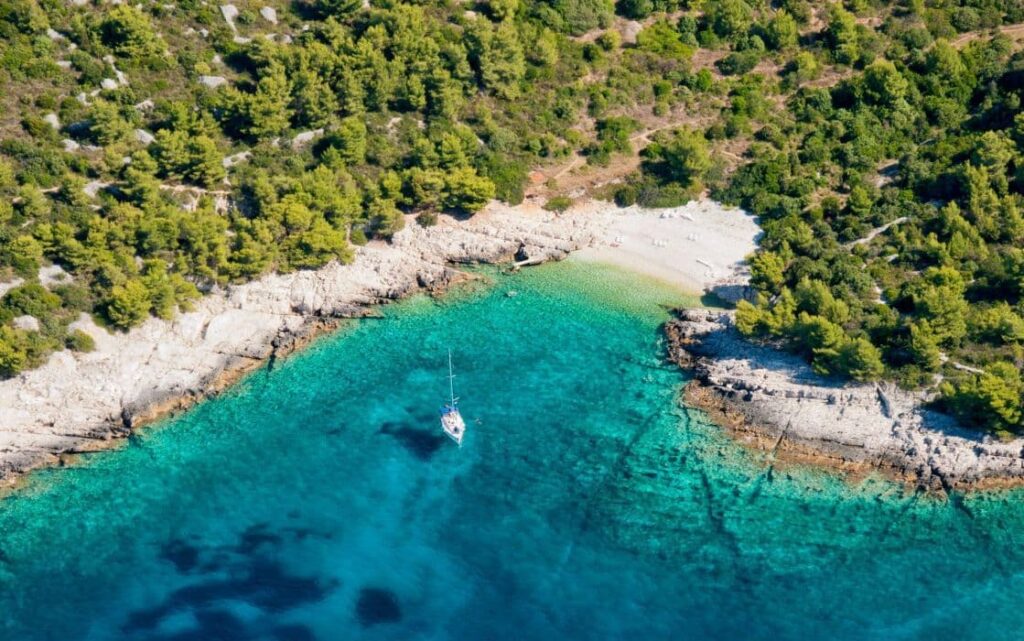
Where to Stay
- Luxury: Palace Elisabeth, Hvar Heritage Hotel or Adriana Hvar Spa Hotel
- Mid-range: Amfora Hvar Grand Beach Resort or Hotel Podstine
- Budget: Villa Nora in Hvar Town or various apartments in Stari Grad
Local Tip
While Hvar Town gets most of the attention, consider staying in Stari Grad for a more authentic experience. From there, you can easily visit Hvar Town by bus or taxi for a day or evening out, then return to the tranquility of this historic settlement.
2. Brač Island: Home of the Golden Horn
Distance from Split: 12-22 miles (19-35 km) depending on port
Ferry duration: 50 minutes to Bol (catamaran), 50 minutes to Supetar (car ferry)
Weekly connections: 7 sailings to Bol, 50+ to Supetar in peak season
As the largest island in Dalmatia and the closest major island to Split, Brač offers an accessible yet diverse island experience with something for everyone.

What Makes Brač Special
Brač is most famous for Zlatni Rat (Golden Horn), a distinctive pebble beach near the town of Bol that extends like a tongue into the sea, changing its shape with the currents and winds. This photogenic beach is one of Croatia’s most recognizable landmarks and appears on countless tourism brochures.
Beyond this iconic beach, Brač offers:
- Supetar: The island’s main port and largest town, with a charming harbor, historic churches, and Roman mosaics
- Bol: A picturesque resort town with a palm-lined promenade leading to Zlatni Rat
- Pučišća: Often described as one of Europe’s prettiest villages, famous for its white limestone and stonemason school
- Vidova Gora: The highest peak in the Adriatic islands (778m), offering panoramic views of neighboring islands

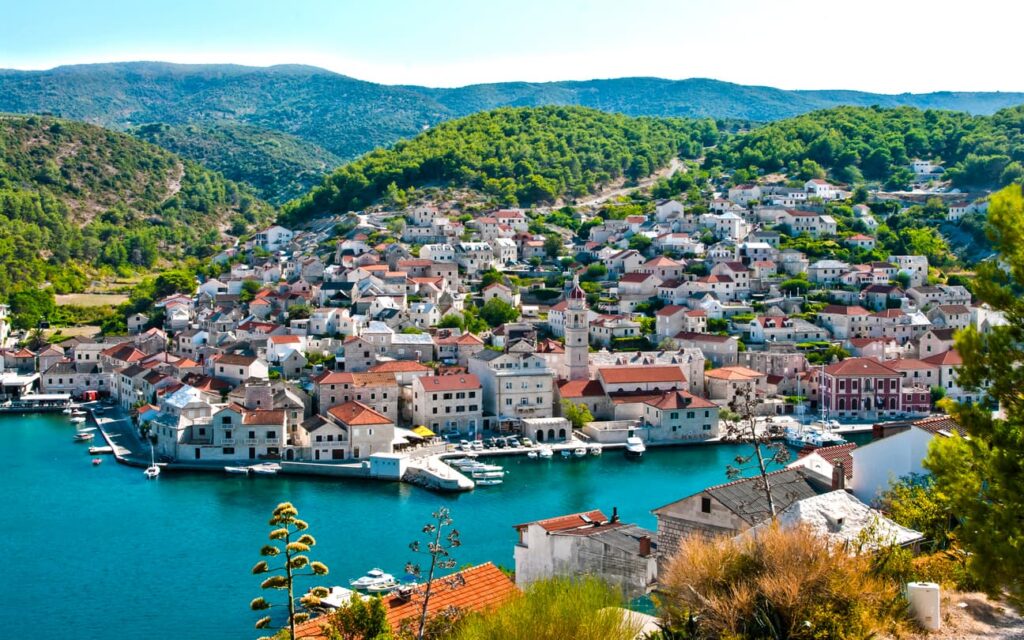
Beaches and Natural Attractions
- Zlatni Rat: The famous horn-shaped beach near Bol
- Lovrečina Bay: A rare sandy beach on the north coast with the remains of a 5th-century basilica
- Murvica Beach: A secluded pebble beach west of Bol, accessible by a coastal path
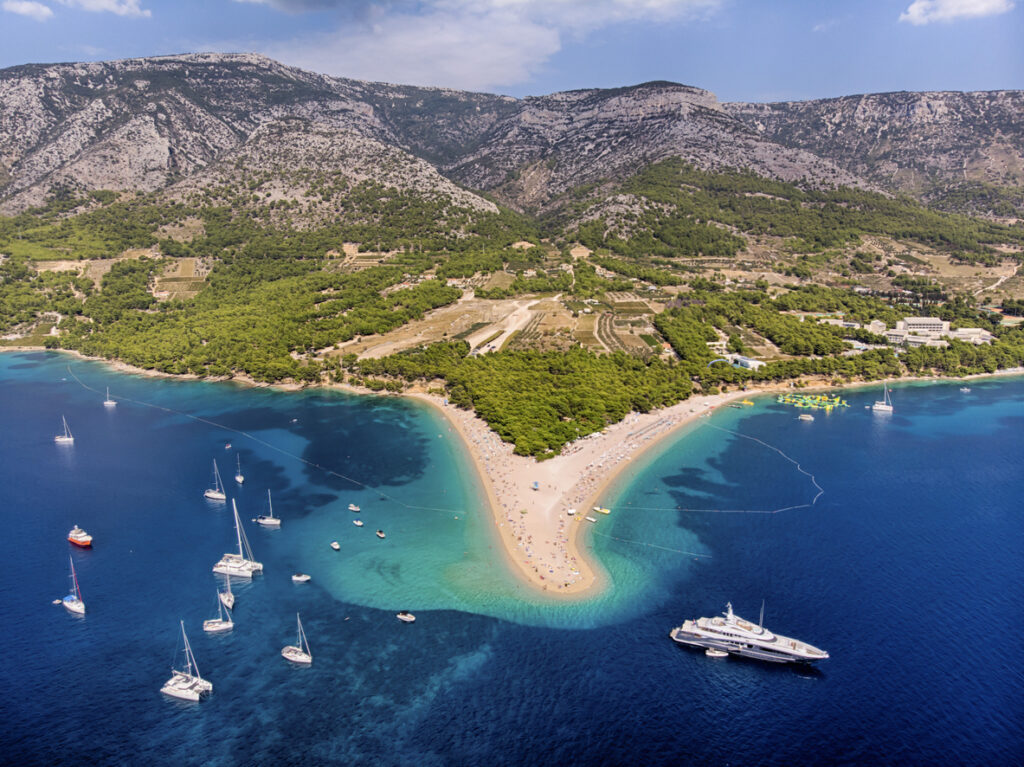
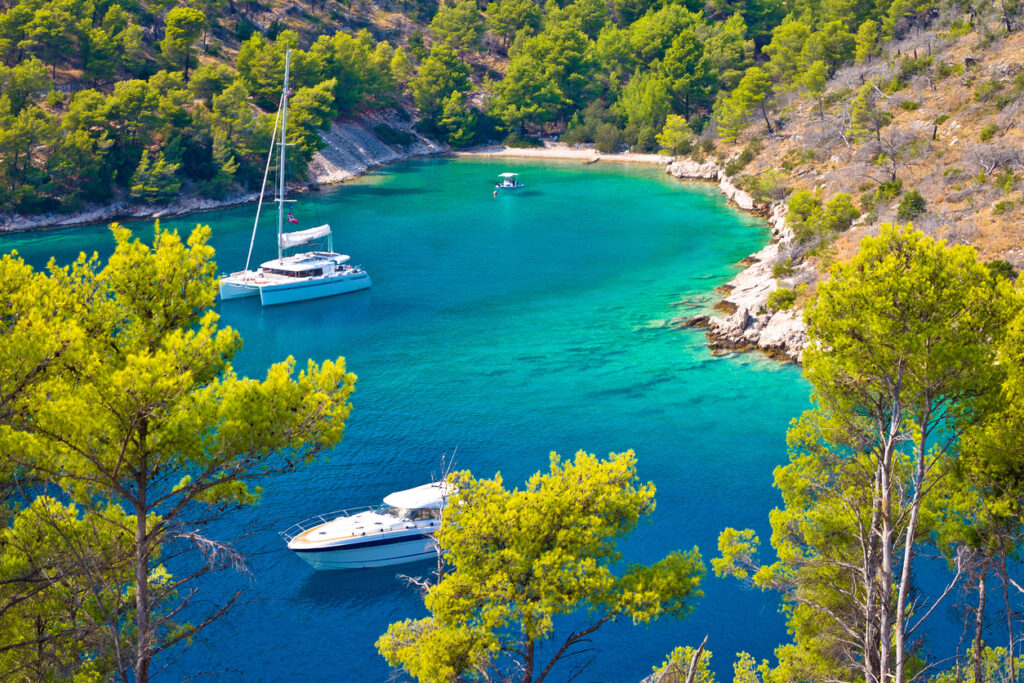
Where to Stay
- Luxury: Lemongarden Hotel in Sutivan or Hotel Osam in Supetar
- Mid-range: Bluesun Hotel Elaphusa in Bol or Hotel Amor in Supetar
- Budget: Villa Giardino in Bol or numerous apartments throughout the island
Local Tip
Brač is known for its exceptional olive oil and lamb dishes. Visit the olive oil museum in Škrip to learn about the island’s 2,500-year olive growing tradition, then enjoy a traditional lamb meal at one of the konobas (taverns) in the island’s interior villages.
3. Vis Island: The Authentic Retreat
Distance from Split: 33 miles (53 km)
Ferry duration: 1 hour 20 minutes (catamaran), 2 hours 20 minutes (car ferry)
Weekly connections: 4 sailings in peak season
As the furthest inhabited island from the mainland, Vis remained closed to foreign visitors until 1989 as it served as a Yugoslav military base. This isolation preserved its authentic character and unspoiled nature, making it a paradise for travelers seeking a more genuine Croatian island experience.
What Makes Vis Special
Vis offers a glimpse into traditional Dalmatian island life, with fishing, winemaking, and agriculture still forming the backbone of the local economy. The island gained international attention as the filming location for “Mamma Mia: Here We Go Again,” showcasing its stunning landscapes to global audiences.
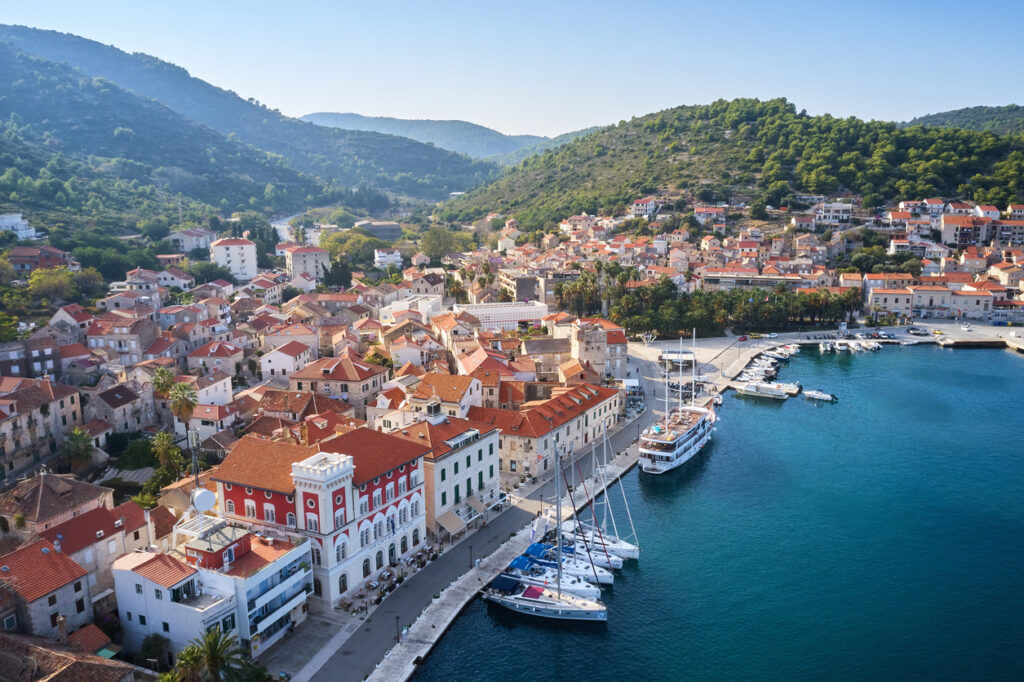
Key attractions include:
- Vis Town: The main settlement with elegant Venetian architecture and a relaxed harbor atmosphere
- Komiža: A picturesque fishing village on the western coast with narrow streets and authentic charm
- Military tunnels: Remnants of the island’s strategic past, including submarine pens and underground tunnels
- Blue Cave: Located on nearby Biševo Island, this natural sea cave is illuminated by an otherworldly blue light (accessible by boat tour from Vis)
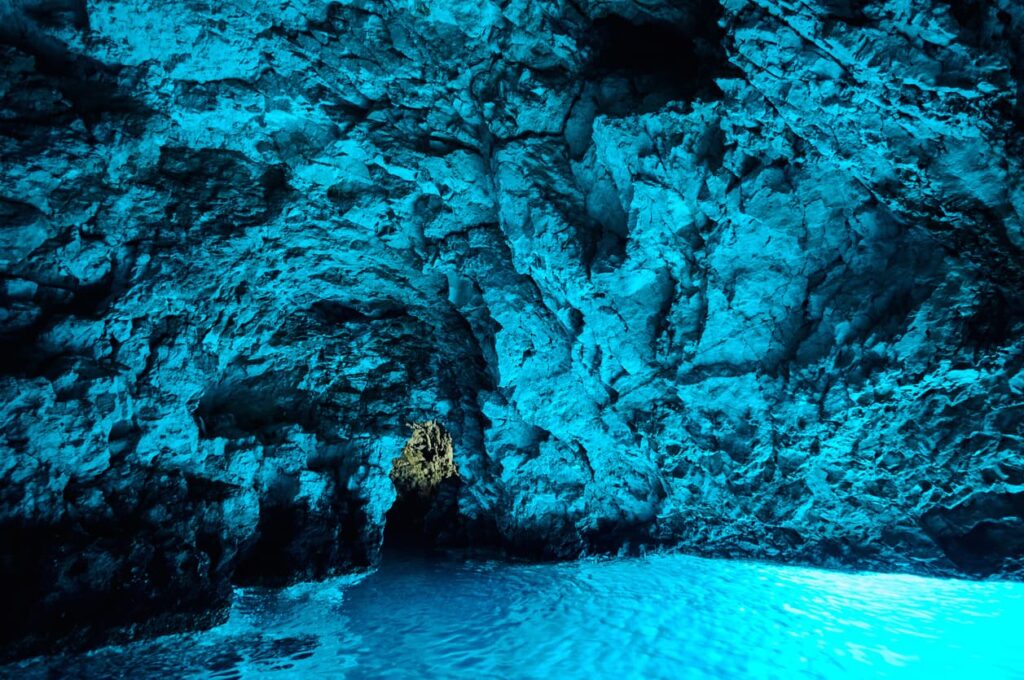
Beaches and Natural Attractions
- Stiniva Beach: Named Europe’s best beach in 2016, this hidden cove is enclosed by towering cliffs
- Srebrna Beach: A beautiful pebble beach with silver-colored stones that give it its name (“silver beach”)
- Green Cave: Less crowded than the Blue Cave, this sea cave is illuminated by emerald light

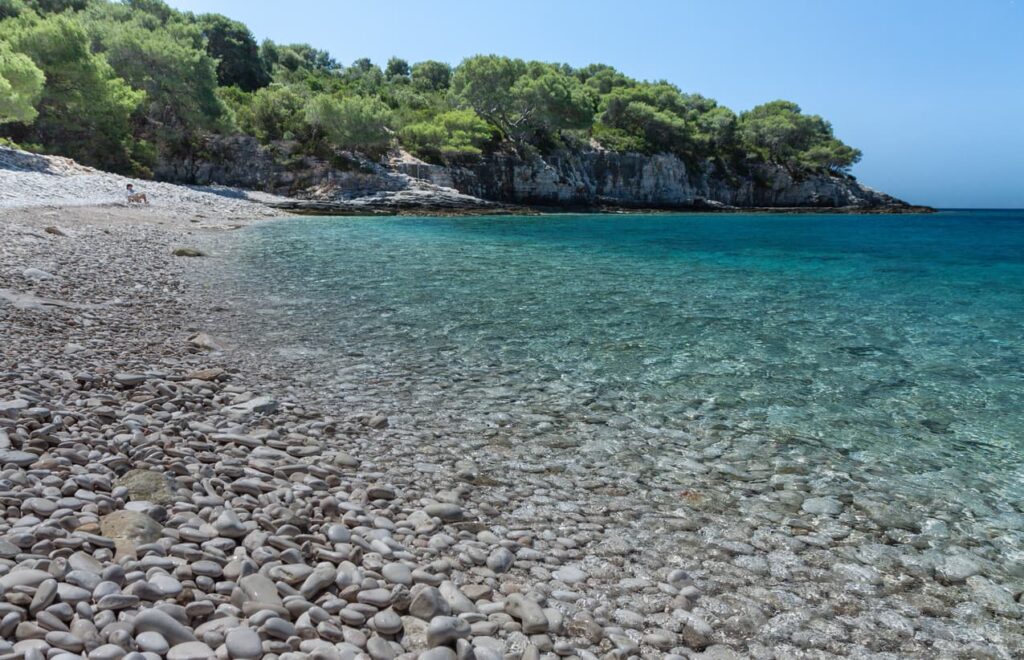
Where to Stay
- Luxury: Hotel San Giorgio in Vis Town
- Mid-range: Hotel Tamaris in Vis Town or Hotel Biševo in Komiža
- Budget: Guesthouse Dionis in Vis Town or apartments in Komiža
Local Tip
Vis is renowned for its wines, particularly Vugava (white) and Plavac Mali (red). Visit local wineries like Lipanović or Roki’s for tastings, and don’t miss trying “viška pogača” – a traditional savory pie filled with anchovies, onions, and tomatoes.
4. Šolta Island: The Underrated Gem
Distance from Split: 9 miles (14 km)
Ferry duration: 30 minutes (catamaran), 50 minutes (car ferry)
Weekly connections: 21 sailings in peak season
Despite being one of the closest islands to Split, Šolta remains refreshingly untouched by mass tourism, offering an authentic slice of Dalmatian island life just a short ferry ride from the city.
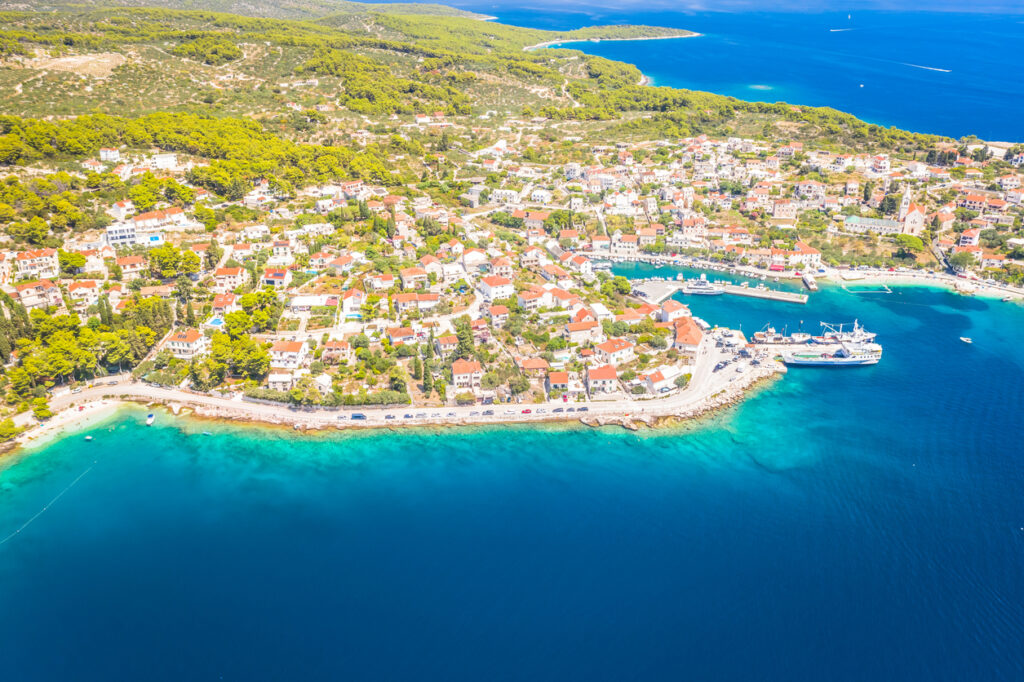
What Makes Šolta Special
Šolta’s charm lies in its understated beauty and traditional way of life. The island is known for its olive groves, vineyards, and honey production, with agriculture and fishing still forming the backbone of the local economy.
Key attractions include:
- Maslinica: A picturesque village on the western coast with a beautiful marina and 18th-century castle
- Stomorska: The oldest and largest port on the island with a charming waterfront promenade
- Nečujam: The largest bay on the island with several beautiful beaches
- Inland villages: Traditional settlements like Grohote, Gornje Selo, and Srednje Selo offer a glimpse into authentic island life
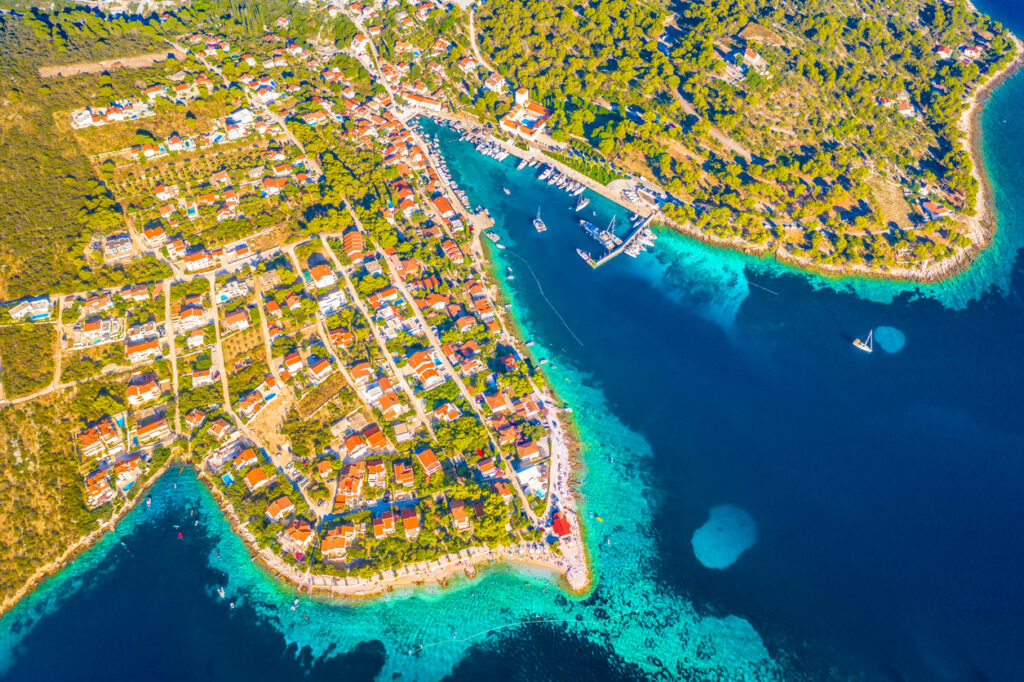
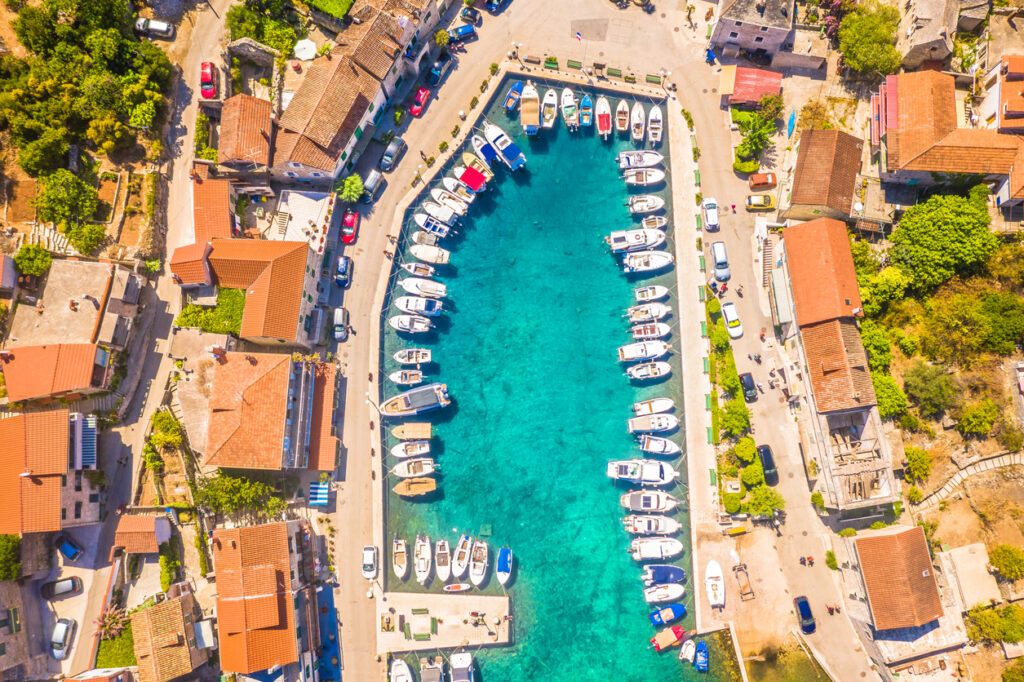
Beaches and Natural Attractions
- Tatinja Bay: A calm, protected bay ideal for swimming
- Maslinica Beach: A pebble beach with crystal-clear water near the village
- Senjska Bay: A popular spot for diving enthusiasts
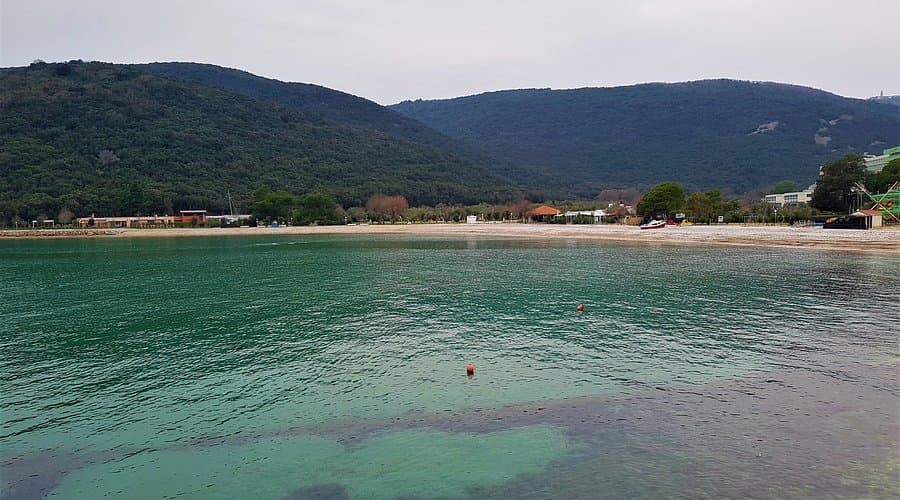
Where to Stay
- Luxury: Martinis Marchi Heritage Hotel in Maslinica
- Mid-range: Hotel Šolta in Nečujam
- Budget: Various apartments and guesthouses throughout the island
Local Tip
Šolta is famous for its olive oil and honey. Visit Olynthia Natura in Gornje Selo to learn about traditional olive oil production and taste their award-winning oils. For honey enthusiasts, local beekeepers offer tours and tastings of their distinctive rosemary honey.
5. Korčula Island: The Mini Dubrovnik
Distance from Split: 56 miles (90 km)
Ferry duration: 2 hours 40 minutes (catamaran)
Weekly connections: 28 sailings in peak season
Often called “Little Dubrovnik,” Korčula captivates visitors with its medieval walled town, rich cultural heritage, and diverse landscapes ranging from dense forests to vineyard-covered hills and secluded beaches.
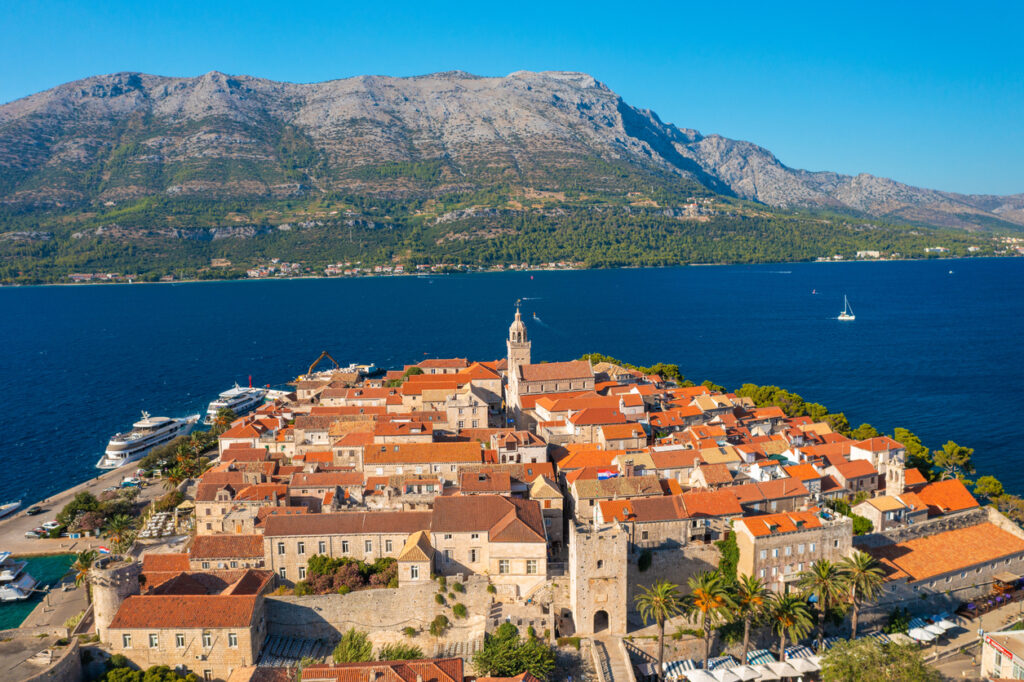
What Makes Korčula Special
Korčula Town is the island’s crown jewel—a medieval walled city built on a small peninsula, with narrow streets arranged in a herringbone pattern to provide shelter from the wind while allowing air circulation. The town claims to be the birthplace of Marco Polo, and you can visit a house purported to be his birthplace.
Beyond the main town, Korčula offers:
- Lumbarda: A charming village known for its sandy beaches and Grk wine production
- Vela Luka: The largest town on the island, located in a deep, sheltered bay
- Blato: An inland town surrounded by vineyards and olive groves
- Moreška: A traditional sword dance performed regularly in Korčula Town
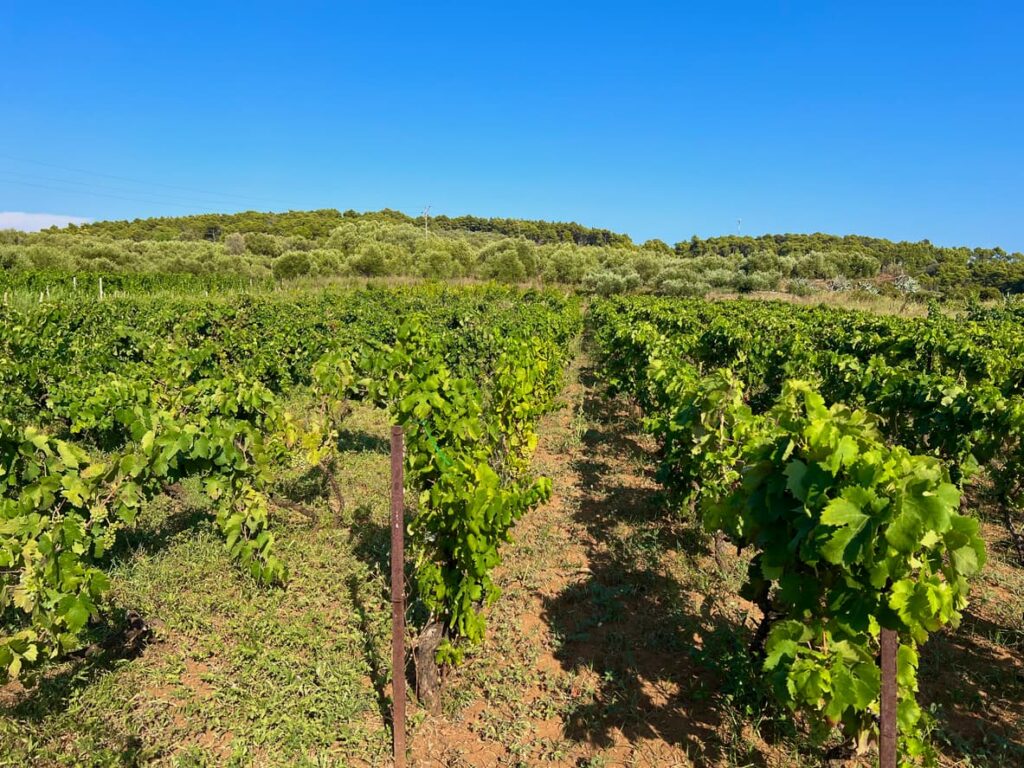
Beaches and Natural Attractions
- Pupnatska Luka: A beautiful pebble beach in a sheltered bay
- Bačva Beach: A secluded beach near Lumbarda with stunning views
- Proizd: A small island near Vela Luka with crystal-clear waters and rocky beaches

Where to Stay
- Luxury: Lešić Dimitri Palace in Korčula Town or Hotel Korkyra in Vela Luka
- Mid-range: Hotel Korčula De La Ville or Hotel Marko Polo in Korčula Town
- Budget: Apartments and guesthouses throughout the island
Local Tip
Korčula is known for its white wines, particularly Pošip and Grk. Visit the Toreta Winery in Smokvica or Bire Winery in Lumbarda for tastings. For a unique experience, attend a performance of the Moreška sword dance, traditionally held on Thursday evenings in Korčula Town during summer.
6. Biševo Island: Home of the Blue Cave
Distance from Split: 44 miles (71 km)
Access: Boat tour from Split or ferry to Vis, then small boat to Biševo
Duration: Full-day excursion
Though tiny in size with only about a dozen permanent residents, Biševo attracts thousands of visitors each year who come to witness the magical natural phenomenon of the Blue Cave.
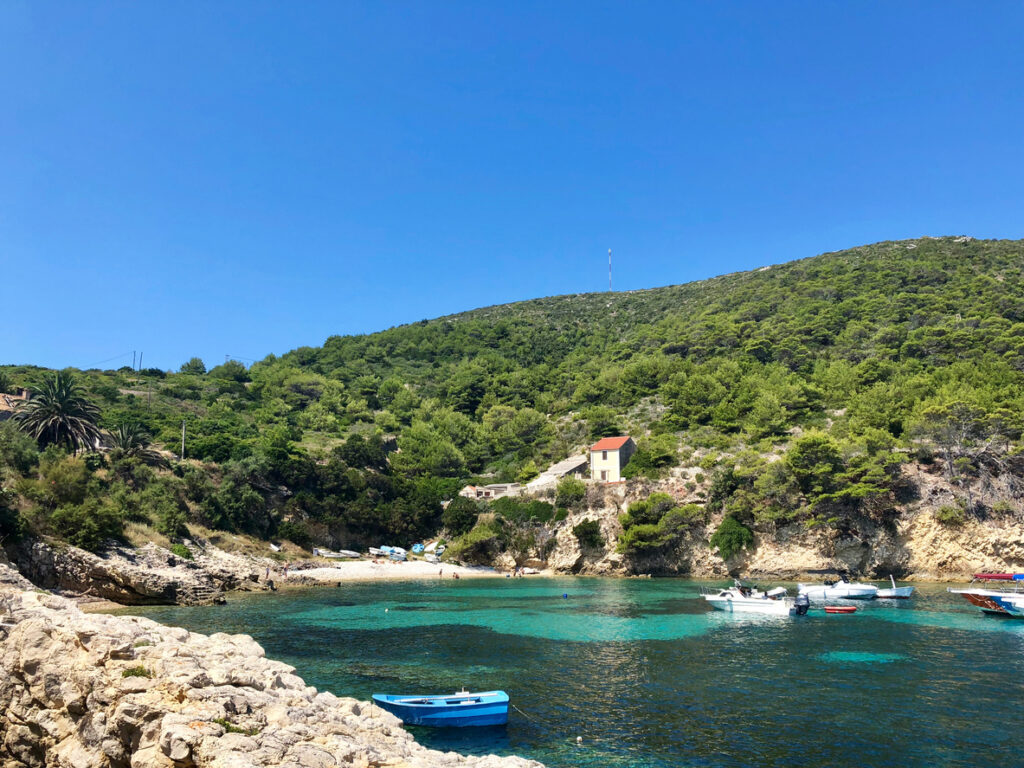
What Makes Biševo Special
The Blue Cave (Modra Špilja) is Biševo’s main attraction—a sea cave where, at certain times of day, sunlight enters through an underwater opening, reflecting off the white seabed and bathing the interior in an ethereal blue light. The effect is most pronounced between 11 am and noon on sunny days.
Beyond the Blue Cave, Biševo offers:
- Monk Seal Cave: A spacious cave with a small beach inside, named after the Mediterranean monk seals that once inhabited it
- St. Sylvester Church: A well-preserved 11th-century church
- Porat Beach: A peaceful pebble beach with crystal-clear water
Visiting the Blue Cave
- Best time: April to October, with June and September offering good weather with fewer crowds
- Entrance fee: Approximately €15 per person (in addition to boat transportation)
- Visit duration: The actual cave visit lasts about 5-10 minutes
- Important note: Swimming in the Blue Cave is not permitted
Local Tip
While most visitors come to Biševo on organized tours that only visit the Blue Cave, consider spending more time on the island if possible. The few residents who remain operate small restaurants serving fresh seafood, and the island’s tranquility after the day-trippers leave is magical.
7. Drvenik Veli: The Blue Lagoon Paradise
Distance from Split: 14 miles (23 km)
Access: Boat tour from Split or Trogir
Duration: Half-day or full-day excursion
This small island southwest of Split has gained popularity in recent years thanks to its stunning Blue Lagoon, a shallow bay with some of the clearest turquoise waters in the Adriatic.
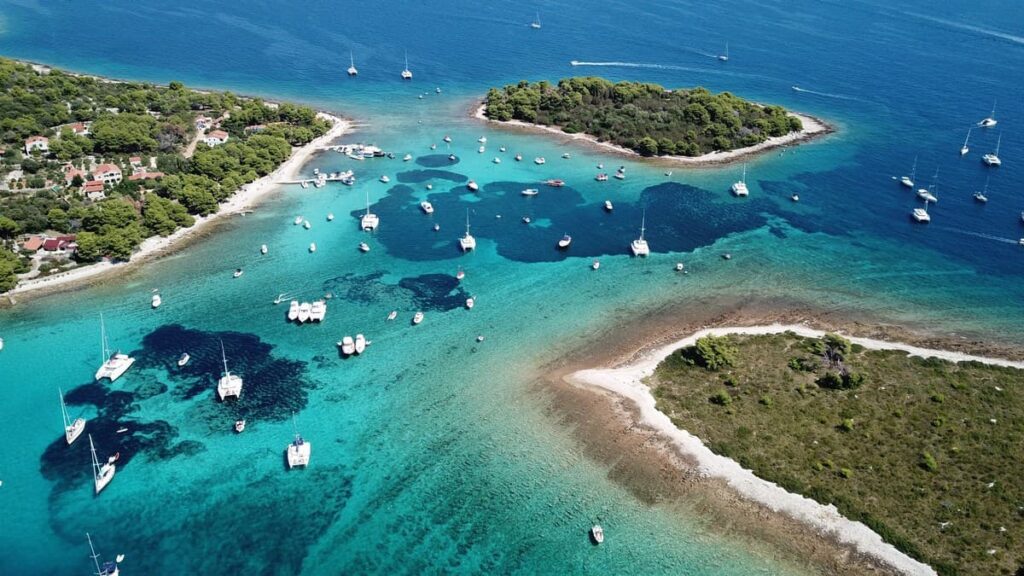
What Makes Drvenik Veli Special
With fewer than 170 permanent residents, Drvenik Veli offers a glimpse into traditional island life centered around fishing, olive cultivation, and increasingly, tourism. The island’s main attraction is the Blue Lagoon (Plava Laguna), a sheltered bay between Drvenik Veli and the tiny islet of Krknjaš, where the sea glows in spectacular shades of turquoise and blue.
Other attractions include:
- St. George’s Church: A 16th-century church with a Venetian altarpiece and baroque furnishings
- St. Nicholas Church: An unfinished early 19th-century church outside the main village
- Traditional stone houses: The main village features well-preserved traditional Dalmatian architecture
Beaches and Natural Attractions
- Blue Lagoon: The shallow, crystal-clear bay perfect for swimming and snorkeling
- Solinska Bay: A peaceful bay with a pebble beach
- Vela Rina: A beautiful cove on the southern side of the island
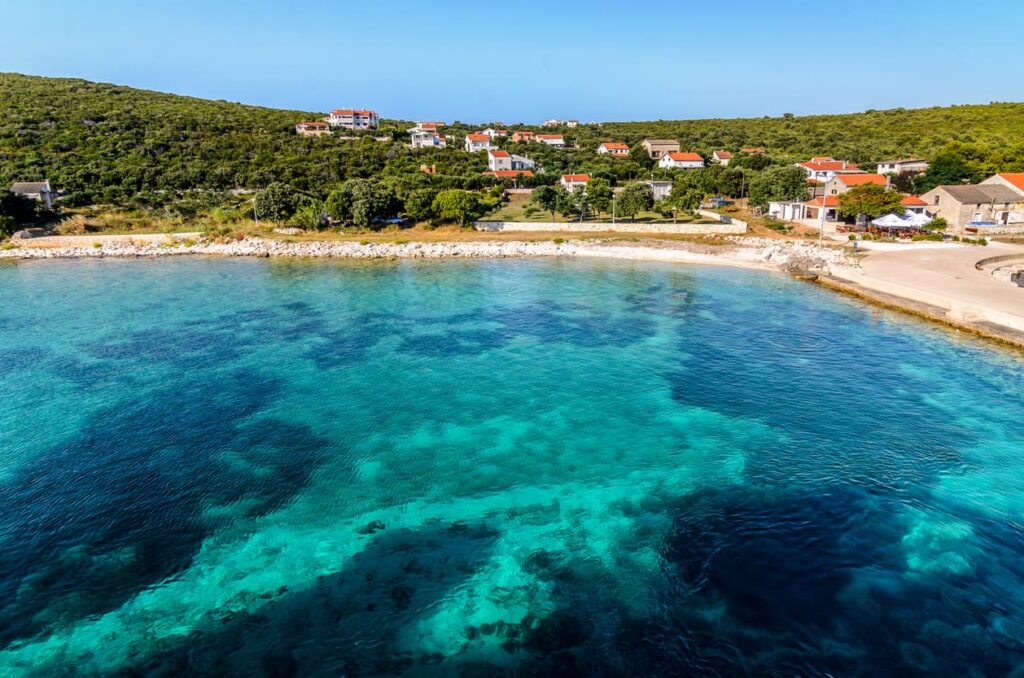
Local Tip
While many visitors come to Drvenik Veli on organized boat tours that only stop at the Blue Lagoon, the island itself deserves exploration. Bring comfortable walking shoes and hike to the highest point for panoramic views of the surrounding archipelago.
8. Čiovo Island: The Accessible Escape
Distance from Split: 15 miles (24 km)
Access: Connected to the mainland by bridge near Trogir
Duration: Easy day trip or overnight stay
Connected to the mainland by a bridge, Čiovo offers the island experience with the convenience of road access, making it perfect for travelers who want to avoid ferry schedules.
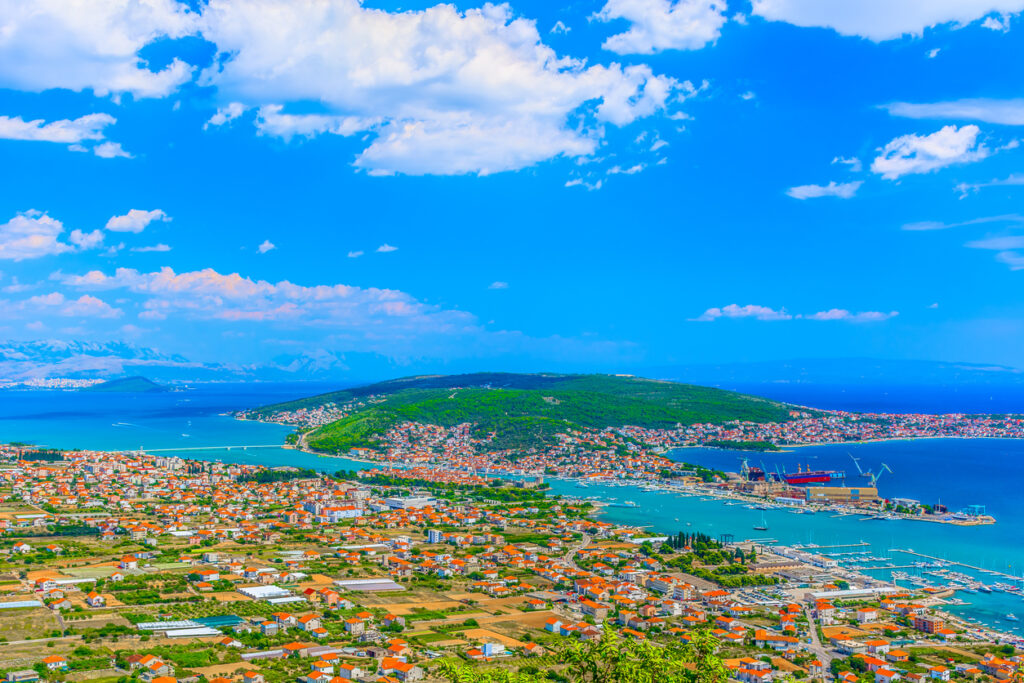
What Makes Čiovo Special
Čiovo serves as a natural extension of the UNESCO-protected town of Trogir, with the northern part of the island increasingly developed as a suburb. However, the southern coast remains relatively untouched, with peaceful villages, secluded coves, and pine forests.

Key attractions include:
- Trogir Old Town: While technically on the mainland, this UNESCO World Heritage site is just across the bridge
- Slatine: A pleasant village on the eastern coast with nice beaches
- Okrug Gornji: The most developed area with popular beaches and water sports
- Diving spots: The northern coast features several excellent diving locations, including Senjska and Livka
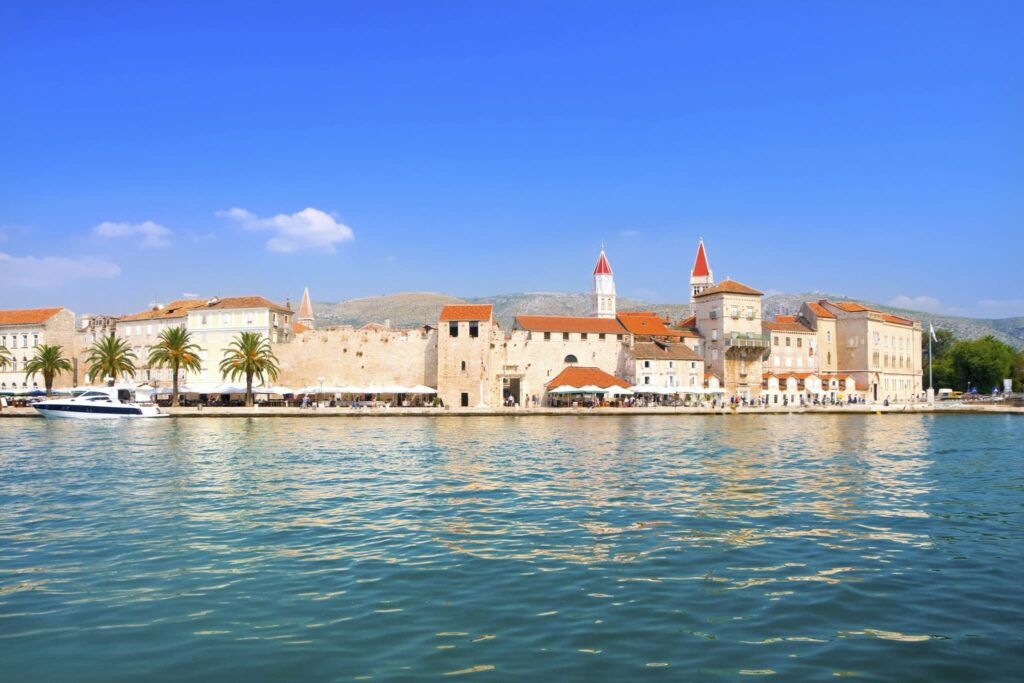
Beaches and Natural Attractions
- Okrug Beach: A long pebble beach with numerous facilities
- Kava Beach: A more secluded beach on the southern coast
- Piskera Bay: Home to remains of Emperor Diocletian’s fish market
Where to Stay
- Luxury: Brown Beach House in Trogir
- Mid-range: Hotel Sveti Križ in Arbanija
- Budget: Apartments throughout Okrug Gornji and other villages
Local Tip
While the northern side of Čiovo can get crowded in summer, the southern coast remains relatively peaceful. Rent a scooter or car to explore the less-visited villages and coves on the southern side for a more authentic experience.
9. Mljet Island: The Green Paradise
Distance from Split: 62 miles (100 km)
Ferry duration: Direct catamaran 2.5 hours (seasonal), or via Korčula
Weekly connections: Limited direct connections from Split
Often described as Croatia’s most enchanting island, Mljet is a verdant paradise with nearly a third of its area protected as a national park. Though further from Split than other islands on this list, its natural beauty makes it worth the journey.
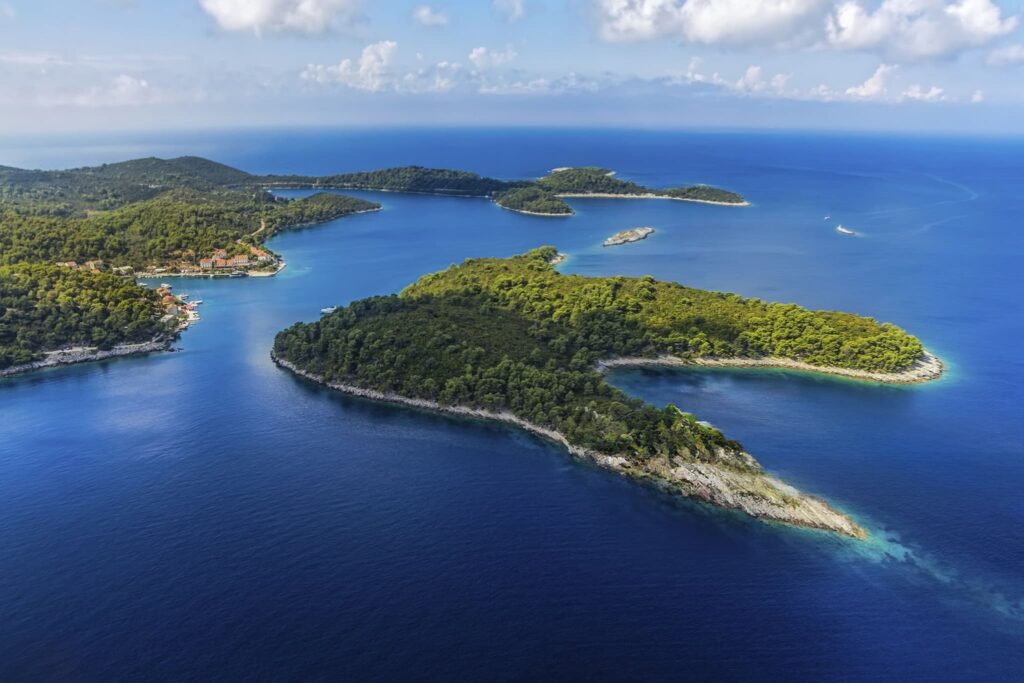
What Makes Mljet Special
Mljet National Park occupies the western third of the island and centers around two interconnected saltwater lakes—Veliko Jezero (Large Lake) and Malo Jezero (Small Lake). In the middle of the Large Lake sits the Isle of St. Mary with a 12th-century Benedictine monastery, creating one of Croatia’s most picturesque settings.
Beyond the national park, Mljet offers:
- Odysseus Cave: A sea cave linked to the legend that Odysseus spent seven years here with the nymph Calypso
- Saplunara: A rare sandy beach on the eastern end of the island
- Polače: Ancient Roman ruins including a palace and fortifications
- Pristine forests: Mljet is one of Croatia’s most densely forested islands
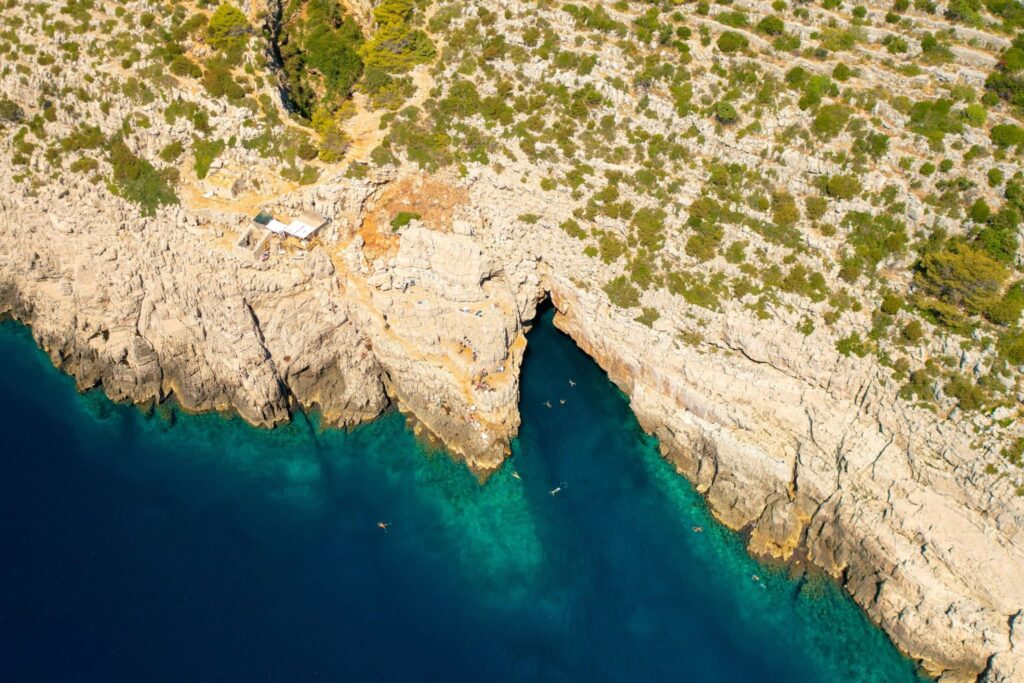
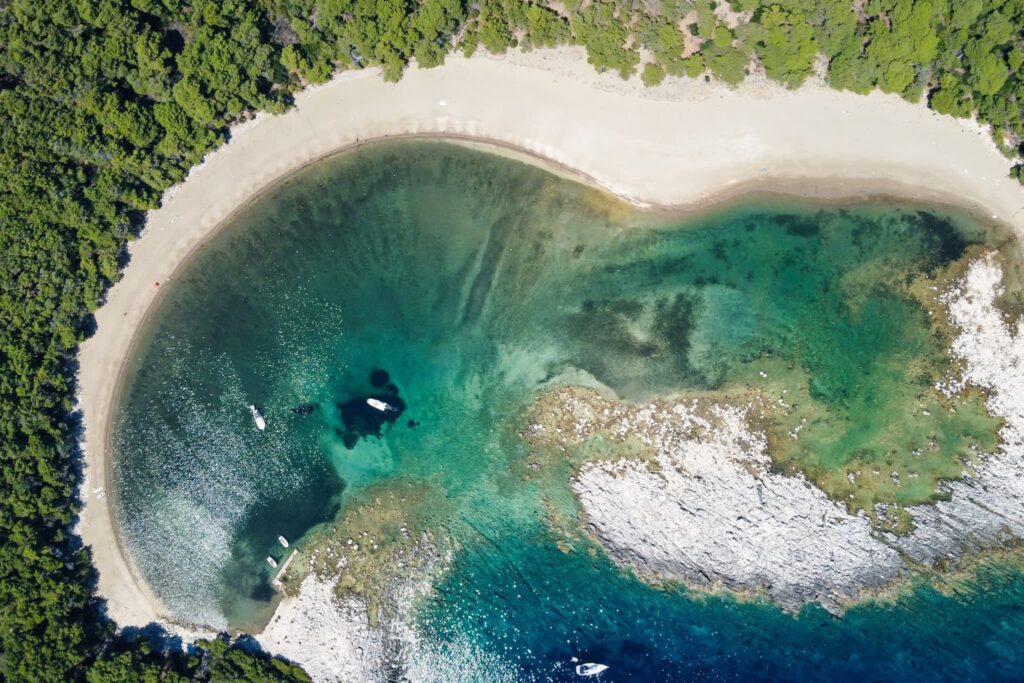
Beaches and Natural Attractions
- Veliko and Malo Jezero: The saltwater lakes perfect for swimming
- Saplunara Beach: A sandy beach with shallow waters
- Odysseus Cave: Swimming spot accessible by boat or a hike down the cliffs
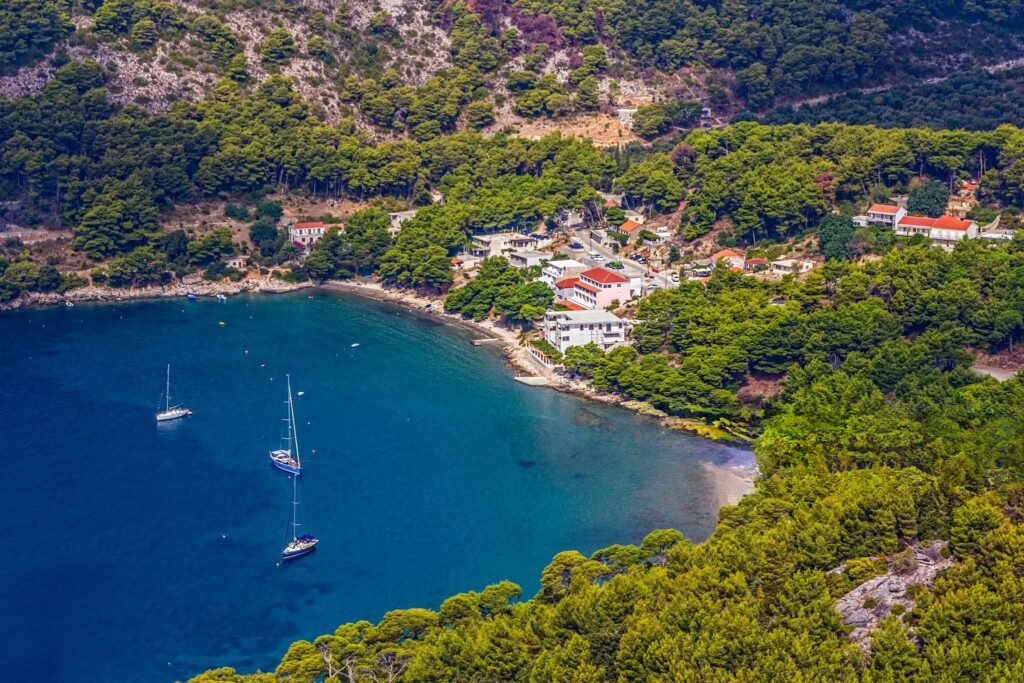
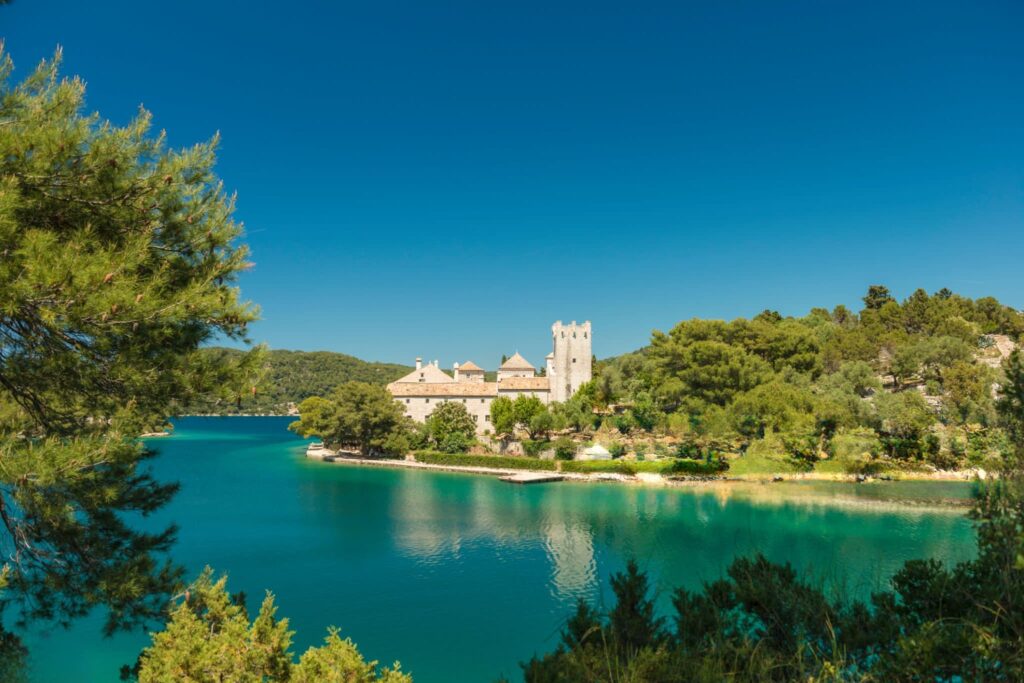
Where to Stay
- Luxury: Hotel Odisej in Pomena
- Mid-range: Various apartments in Pomena or Polače
- Budget: Guesthouses in Babino Polje or other villages
Local Tip
Rent bicycles at the national park entrance to explore the lakes and surrounding paths. The 9 km trail around the Large Lake offers stunning views and access to swimming spots. Visit early in the morning or late afternoon to avoid day-trippers and experience the park at its most peaceful.

| Island | Distance from Split | Ferry Duration | Main Attractions |
|---|---|---|---|
| Hvar | 33 miles (53 km) | 55 min (catamaran) | Nightlife, Hvar Town, Pakleni Islands |
| Brač | 12-22 miles | 50 min | Zlatni Rat, Vidova Gora, Bol |
| Vis | 33 miles (53 km) | 1h 20m (catamaran) | Blue Cave, Komiža, Military Tunnels |
| Šolta | 9 miles (14 km) | 30-50 min | Maslinica, Olive Oil Tasting, Bays |
| Korčula | 56 miles (90 km) | 2h 40m (catamaran) | Korčula Town, Wine Tasting, Moreška Dance |
| Biševo | 44 miles (71 km) | Via Vis | Blue Cave, Monk Seal Cave |
| Drvenik Veli | 14 miles (23 km) | Boat Tour | Blue Lagoon, Traditional Villages |
| Čiovo | 15 miles (24 km) | Connected by Bridge | Okrug Beach, Diving, Trogir Old Town |
| Mljet | 62 miles (100 km) | 2.5h (catamaran) | National Park, Saltwater Lakes, Monastery |
Practical Tips for Island Hopping from Split
Ferry Information
- Jadrolinija: Croatia’s largest ferry operator, connecting all major islands
- Krilo: Operates fast catamaran services during summer
- Kapetan Luka: Another catamaran operator with services to several islands
Booking Tickets
- Book online in advance during peak season (especially July-August)
- For car ferries, arrive at least 1 hour before departure in summer
- Most ferry tickets can be purchased at the port on the day of travel outside peak season
What to Pack
- Water shoes: Essential for rocky and pebble beaches
- Snorkeling gear: The crystal-clear Adriatic is perfect for underwater exploration
- Sun protection: The Croatian sun is intense, especially on the water
- Cash: While credit cards are widely accepted in tourist areas, smaller villages may be cash-only
- Ferry schedules: Download or print timetables as internet access may be limited
Accommodation Tips
- Book accommodation well in advance for July-August
- Consider staying in less touristy villages for a more authentic experience
- Many islands offer private apartments (“apartmani”) that are often better value than hotels
Transportation on Islands
- Scooters: Perfect for exploring smaller islands
- Cars: Useful for larger islands like Brač, Hvar, and Vis
- Bicycles: Great for flat areas and dedicated paths
- Public buses: Available on larger islands but with limited schedules
- Taxis: Available in main towns but can be expensive
Conclusion
The islands near Split offer an incredible diversity of experiences, from the vibrant nightlife of Hvar to the untouched nature of Mljet, the historical richness of Korčula to the hidden beaches of Vis. Each island has its own distinct character, traditions, and natural beauty waiting to be discovered.
See yacht charter Croatia options.
Whether you’re planning a quick weekend getaway or an extended exploration of the Dalmatian archipelago, island hopping from Split provides some of the most memorable experiences Croatia has to offer. The combination of crystal-clear waters, historic towns, delicious cuisine, and warm hospitality creates the perfect recipe for an unforgettable Mediterranean adventure.
So pack your swimsuit, grab your ferry tickets, and prepare to discover why Croatia’s islands rank among Europe’s most cherished destinations. The Adriatic awaits!
Explore island hopping adventures along the Adriatic Coast.
The top islands to visit near Split include Hvar, Brač, Vis, Šolta, Korčula, Biševo, Drvenik Veli, Čiovo, and Mljet, each offering unique attractions from nightlife to nature.
For a well-rounded experience, plan 7-14 days to explore 4-6 islands, though day trips from Split to nearby islands are also possible.
You can travel via public ferries, high-speed catamarans, private boat tours, or charter yachts, with options varying by season and island.
The best time to island hop from Split is between April and June or September and October for good weather, fewer crowds, and more ferry options.
Hvar Island is known for its vibrant nightlife, upscale beach bars, and celebrity visitors, especially in Hvar Town.

